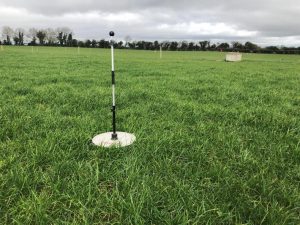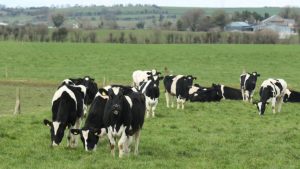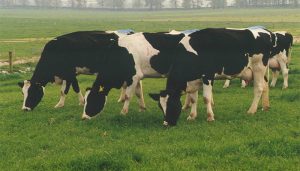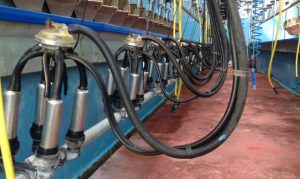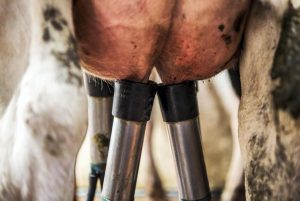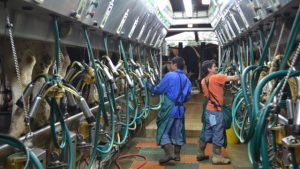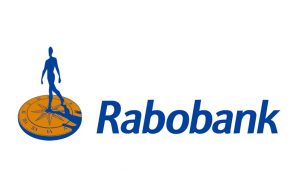
Many modern dairy farms in Ireland invested in new rotary, herringbone or robotic milking systems when quotas lifted to milk growing numbers of dairy cows fast and efficiently.
Farming in Carrigallen, Co. Leitrim, Brian and his father Noel Kiernan are suckler and dairy farmers who didn’t feel the need to expand operations and were quite happy with the existing infrastructure in place on the farm.
Brian and his father milk a total of 30 dairy cows and keep 10 suckler cows. Brian also works off-farm while his father Noel is farming full time.
The dairy herd calves all year round and the suckler herd is primarily spring calving. Breeding is carried out on both dairy and suckler cows using entirely Artificial Insemenation (AI) bulls sourced from Progressive Genetics.
The bulls used on the suckler cows are primarily Salers, Limousin and Charolais. On the dairy cows, Angus, Hereford and some continental AI bulls are used.
“We don’t really use dairy sires because we find there’s not enough money to be got for the dairy bull calves. We tend to buy in our replacement heifers as we need them,” Brian explained.
The bull calves from the dairy herd are sold as calves and the heifer calves are kept on and sold as stores in the local livestock sale, Carrigallen Mart, which Brian works part-time in.
Brian, who is also an active member of his local Macra na Feirme club, said “I enjoy working in the mart. It’s a great chance to meet with other farmers and have a catch up with them.”
The land type on the farm is mixed with some good, dry land near the yard and some bottomy-type, heavy land also.
Two pits of silage are made on the farm, one for first cut and one for second cut. The first cut is generally taken in early June and the second cut is made in early August. 100 bales of silage and hay are made during the year also from surplus paddocks and meadows.
Rushes on heavy-type ground are cut and wilted. These are used for bedding cattle in the winter. “We buy in no straw at all,” Brian outlined.
“The rushes are easily wilted and provide plenty of soakage for bedding. Calves would be bedded every day and older cattle are well bedded every four or five days.”
The milking takes place in a 4-unit Abrest parlour. “The cows walk in themselves and are well used to it. They each have their own spot and know when its their turn to come in. The clusters are put on from the side in this parlour. It’s a constant rotation from the first stall to the fourth stall and back round again.” Cows are fed concentrates at milking.
“My father has been milking in this parlour for 40 years and the man before him milked in it for 40-50 years as well so it could be standing here 80-100 years.”
“A few bits have been changed and added over the years but in general, there have been no changes to the shed itself.”
Brian said they never considered upgrading the parlour but added it’s something he may consider in years to come.
“It’s handy for 30 cows. We don’t see the point in upgrading. It works well and there’s never any issues.”
“The cows are all trained to it and a cow from a herringbone parlour can generally be trained to it in 2-3 milkings. Heifers are run with the cows a month before they calve, so they’re well used to it by the time they calve down.”
The farm supplies its milk all year to Lakeland Dairies in Killeshandra. “We get a winter bonus and a few other bits and pieces so it works out well.”
Brian has no current plans to expand saying: “It will be the 30 cow mark for the foreseeable future.”
Commenting on the current milk price, Brian said: “Milk price is great, you couldn’t get any better and we’re very happy.”
The grazing platform for the dairy cows is all strip grazed in a three-week rotation and the grazing season runs from April to October on a good year. “We have plenty of grass ahead of us at the moment so we’re lucky in that sense.”
Sucklers
Commenting on his suckler system, Brian explained: “I calve the sucklers in one group and sell them on with calves at foot. I buy heifers back in and begin the process again.”
Brian said he buys a well-bred heifer and has a preference for Limousin and Belgian Blue-cross heifers in this system. “They’re all fully suckler-bred. I look for good, shapey heifers and if I have to pay a few quid more for a good, one, I don’t mind.”
Suckler breeding heifers due to calve next spring are kept on an out-farm


“I sell the whole outfit, the cow and calf at foot at about six weeks weeks old. I don’t keep them on for a weanling. It leaves a few pound behind. They always sell well because some farmers don’t want the hardship of calving a cow but they like to have a calf on the ground when they buy an animal.”
“If you keep a good eye on them there’s generally no problems. Put on good bulls is the secret.”
Brian will buy in heifers from March to May and bull them in June to have them calving from March onwards. “It’s all about using good bulls,” he reiterated.
They’re bulled in the shed and kept in for four weeks to make sure they hold and if they repeat the get one chance and then they’re gone.”
Loy digging
Brian is also a master of the ancient art of Loy digging. The loy is a historic digging tool that was used in the past to till soil. “When a few older farmers in the local area were getting out of it, I said I’d give it a try.”
Brian competed in the National Ploughing Chapionships’ loy digging class. “I came second the first year I competed and I went back the following year and took home first place.
“Loy digging involves digging a ridge with a spade and turning it over. It’s judged by the depth and the straightness of the sod you turn over. It would have been the original form of ploughing before horses came about for planting vegetables.”
Going forward, Brian and his father plan to continue their current farming system of producing milk, store cattle and quality suckler progeny.













